The substrate under the linoleum on the concrete floor: an overview 5 popular options + stacking technology
Table of contents
-
1 substrate types
- 1.1 cork
- 1.2 The substrate of jute
- 1.3 linen backing
- 1.4 combined option
- 1.5 The substrate of polyethylene foam
- 1.6 As substrate stack
- 2 Output
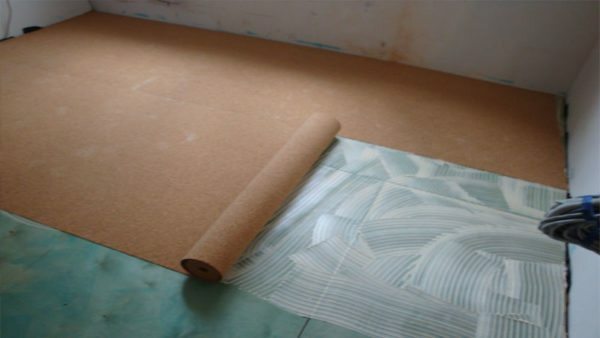
Cork substrate has high soundproofing properties
Bought linoleum, but do not know what kind of substrate to use? Let us see what are the different types of substrates, and what works best for your environment. And then figure out how to fit the substrate under linoleum on the concrete floor, to create a perfect base for the coating.
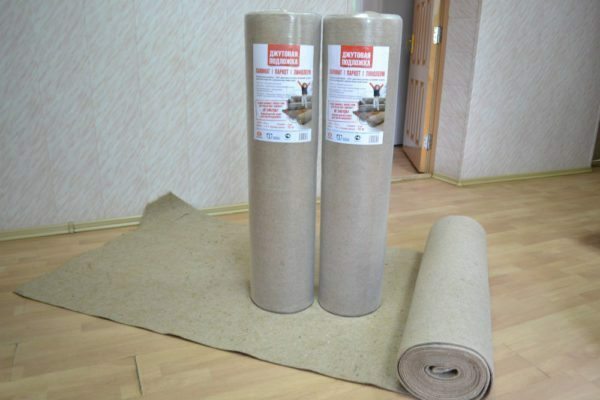
Jute substrate is durable under linoleum
substrate types
Let us consider 5 main options:
- Cork;
- Jute basis;
- Lining from flax;
- Combined embodiment;
- The material of foamed polyethylene.
Often the question arises whether the substrate under the linoleum is necessary? If you have a perfectly smooth, well-insulated and soundproofed floor, then use the liner is not necessary.
But such grounds are very rare, so in most cases, before laying the flooring need to be laid and the substrate.
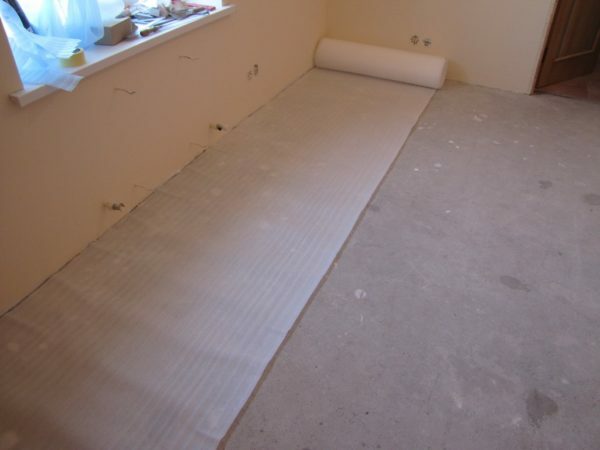
Plain concrete floor has many small irregularities, so it necessarily fit lining before linoleum flooring
cork

Cork - an eco-friendly material, well suited as a basis for linoleum
Cork lining under the linoleum on the concrete floor has the following advantages:
- Long service life. Quality material retains the properties of over 25-30 years;
- High sound insulation characteristics. If you need to isolate the noise floor from the ground floor, the cap fit perfectly;
- Environmentally friendly. As part of only natural ingredients, this option can be used in any room.
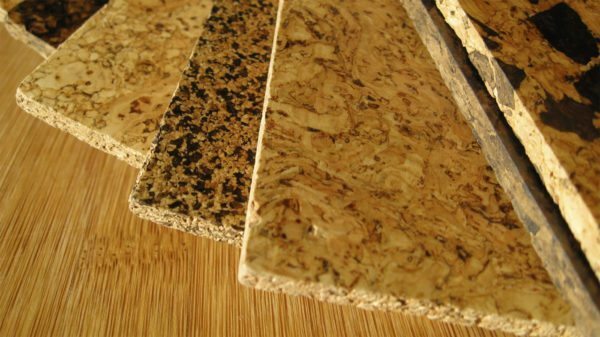
Cork lining is shredded tree bark, held together by a natural adhesive composition
- convenient packaging. Cork underlay on the floor under the linoleum is manufactured in rolls of a width of 1 meter and 10 meters long. They are easy to carry and lay;
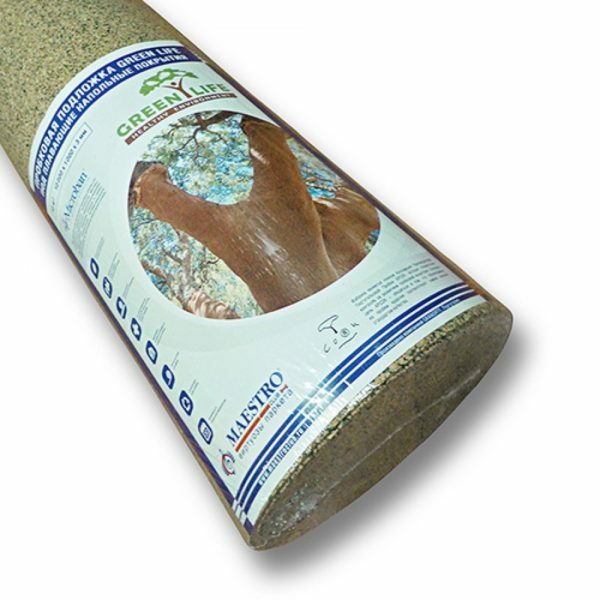
Cork substrate manufactured in rolls of 10 square meters
- Many options thickness. You can buy a bed with a thickness of 2 to 10 mm. The thicker the material, the softer surface is obtained, but its strength is reduced.
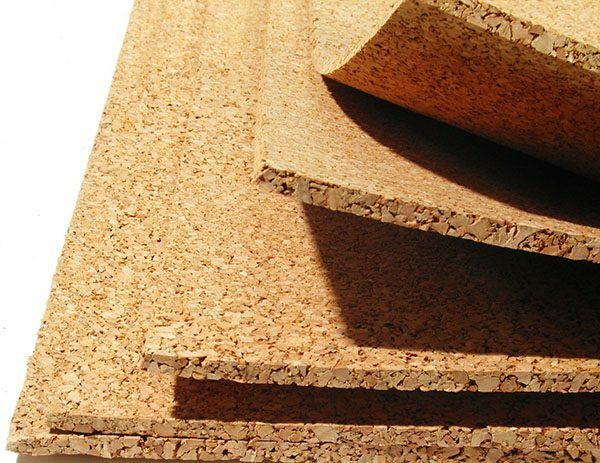
Cork subbase 3-4 mm thick - the best solution for linoleum ratio value and insulation characteristics
As for the cons, the only two of them:
- Softness. In places where the floor is worth the heavy furniture, eventually formed the recess. If you decide to make a permutation, then be prepared for the fact that the irregularities remain on the surface;
- High price. Price roll 2 mm thickness is 1400-1500 rubles to 4 mm version will cost 3500 rubles, and if you need a very thick substrate is 10 mm, then you will pay 8,000 rubles per roll. Often the more expensive lining of the linoleum.
You can put the cork material with a coating for improving foiled floor insulation. It is more expensive by about 10%, but it creates a reflective effect and allows you to save heat in the room.

with a reflective coating cork material is well suited for areas with cold floor
The substrate of jute
Jute mat under the linoleum on the concrete floor has the following advantages:
- Rigidity. The material holds its shape well, not crushed or sags over time. Lining is great for areas with high load on the floor;

Jute substrate is much stiffer than the embodiment of cork material
- Durability. The service life of the basics of jute is 75 years or more. That is, it is several times longer than most of linoleum and the replacement of worn-out cover and base can not change;
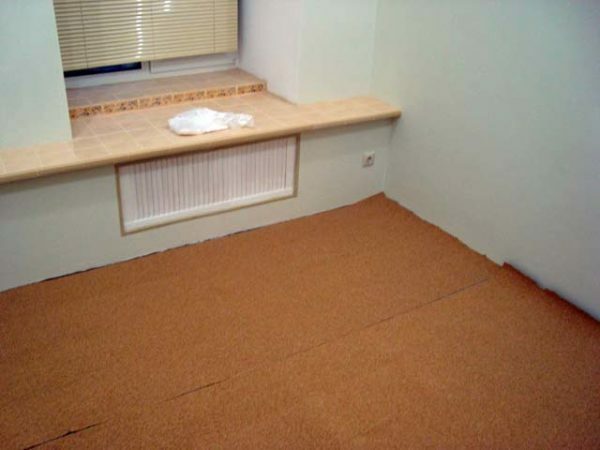
If you decide to replace the linoleum on the laminate or carpet, jute backing can be left
- absorbability. Jute is not afraid of water, so it does not rot over time. A special treatment given to the material is also resistant to combustion;
- Several variants of density. Available options can be found in density from 450 to 750 grams per square meter. The denser the material, the better it resists deformation;
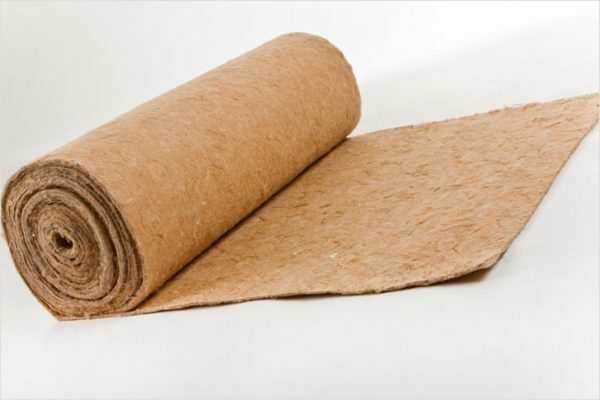
Density jute padding is determined by the weight per square meter of material
- Several variants of the thickness. I have seen material on 2, 3, 4 and 5 mm. This range is sufficient for any type of coating.
- reasonable cost. Price per roll with a width of 1 meter and 10 meter ranges from 1000 to 1300 rubles. It's cheaper cork, with the characteristics of this embodiment is not inferior.
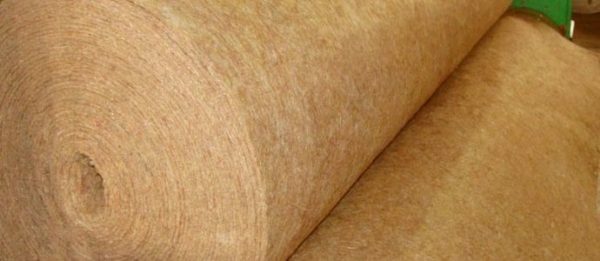
Some manufacturers produce the substrate in large rolls and sell it in running meters, this option is convenient because you can buy as much material as you need
The disadvantage of this solution is one: due to the high rigidity of the irregularities may great and pushes on the surface of linoleum appear hollow.
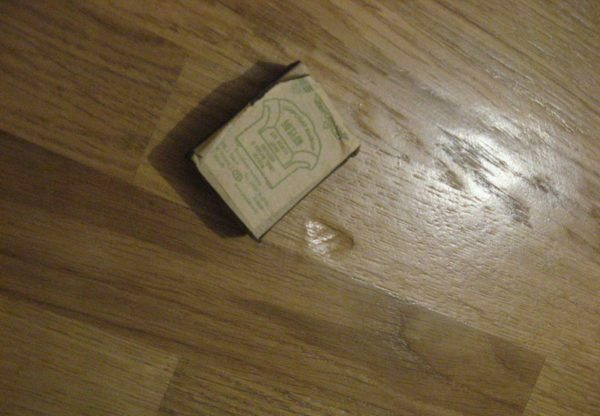
If a substrate made of jute has deep holes, then over time the floor surface in these places prosyadet
linen backing
This type of substrate is much like jute, but has its own characteristics:
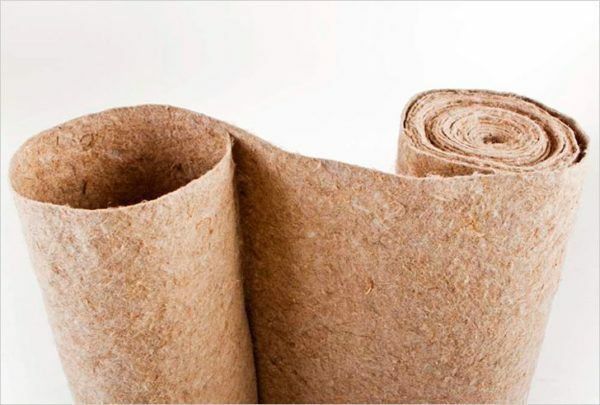
Litter under the linoleum flax has excellent breathability
- Environmentally friendly. It is completely natural material made by stalling on special equipment without the addition of glue. To further secure the mats are stitched;
- Good insulation performance. This option is not as tough as jute, but the heat and sound insulation performance is not worse;

The fibrous structure of flax mat gives the material excellent insulating characteristics
- breathability. Material excellent air permeability and does not prevent the evaporation of moisture from the ground. Due to this, the risk of mold is much lower;
- Different thicknesses. It is possible to acquire sub-base thickness of 3 to 7 mm. I recommend using version 5 mm thick, it is suitable for the majority of the grounds and well eliminates minor irregularities;

Thickness linen substrate often is 4-5 mm
- Affordable price. Square meter of the substrate cost about 100 rubles. In my opinion, this variant is optimal in terms of price and quality.
Cons as there are none. The only drawback - such a substrate can not find everywhere, flax in our time is not distributed as a crop, so the substrate output from it are small.
combined option
Combined substrate under linoleum is manufactured from jute, flax and wool. Such a combination of components causes a number of advantages:
- High thermal performance. Natural wool gives this type of product has the highest heat performance of all options. If you have cold floors, I advise you to use this variant;

Combined substrate - the warmest of all
- Strength. Jute mats gives rigidity, and they do not subside with time;
- wearing qualities. The service life of the combined version is 50 years or more. Structure of wool, flax and jute very well keeps its shape even under high loads;
- low price. Cost per square meter is 150-200 rubles. The material generally has a thickness of 5 mm and is produced in large rolls. In stores you can buy by the meter.
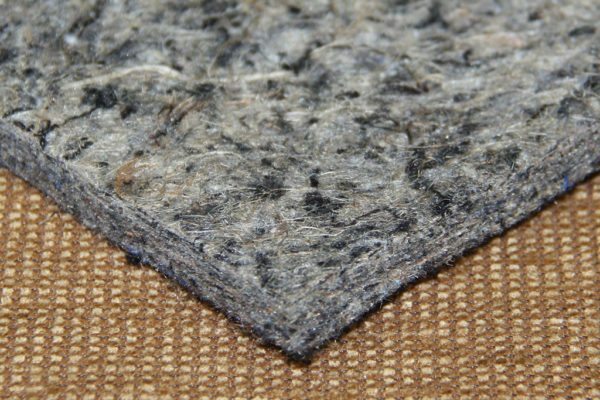
Thick and elastic structure of the combined substrate is not pressed with time
The main drawback - the presence on the market of low-quality product variants. Determine reliability by eye is impossible, all the shortcomings found out only during operation of sex.
The substrate of polyethylene foam
It is a modern version, which has the following features:
- Low price. This is the cheapest type of products from all per square meter you will pay from 10 to 50 rubles, depending on the type and thickness;

Lining made of polyethylene foam is the cheapest of all
- Availability. This option can be found at almost any hardware store;
- A large assortment. The material is sold in rolls or in the form of rigid boards. Also different thickness, it is from 2 to 10 mm;

Sheet roll substrate is much denser, so it is recommended to use on the grounds with numerous small irregularities
When choosing sure to check the elasticity of the material. It is very simple: the substrate is compressed fingers. If it lends itself very easily and after clicking on the surface are dented, so before you poor quality option.
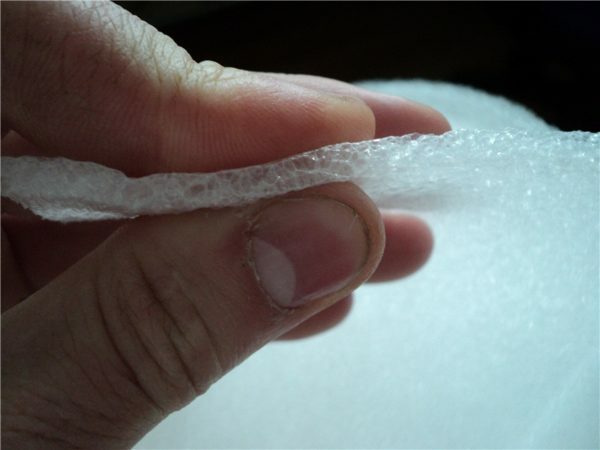
Good substrate different elasticity, after clicking on the surface should be no dents
This embodiment has the following disadvantages:
- fragility. The service life of such a base is not more than 5-10 years. Material inevitably sags over time, and all appear the linoleum surface irregularities;
- airtightness. Polyethylene is not breathable and moisture, so it can be formed under the mold, if the surface is wet.
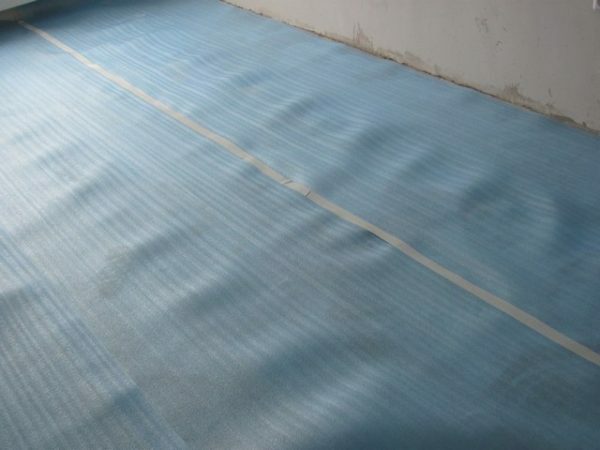
The substrate of polyethylene is not breathable and moisture, so it can be installed only on the dry surface
As substrate stack
To work with your own hands is easy. Instructions for the work is almost the same for all types of materials:
| Illustration | Description stage |
 |
The surface of the prepared.
|
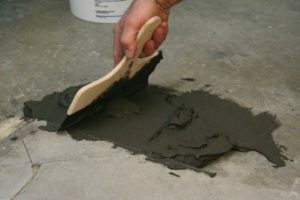 |
Eliminated all significant irregularities. If you have nodules on the floor of the solution, they need to knock down a chisel or sanded. Holes and cracks smeared cement mortar and leveled spatula. level difference should not exceed 2-3 mm. |
 |
stretches the substrate. Material gently straightened and stacked along one wall. When placing the substrate under the linoleum flooring on concrete floors importantly it immediately spread it on the surface to involve no wrinkles, and no material Skewing. |
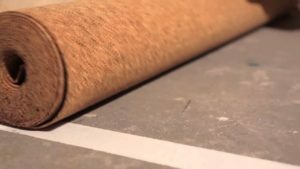 |
lining glued.
|
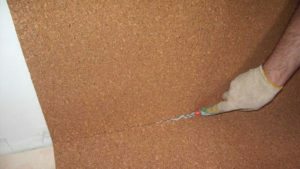 |
Cutting is performed on site. No need to measure and cut pieces in advance, as the geometry of the room can be non-ideal. Cutting the best conventional construction with a knife on the floor and walls of the joint line. |
 |
Laid linoleum. It should be placed with a small margin, as shown in the photos, and let ripen overnight. The coating is fixed you selected method. |
Output
Now you can easily pick up the substrate under the linoleum will be able to put it on their own. Videos in this article will help you understand the topic better, and if you do not understand something, ask in the comments.


